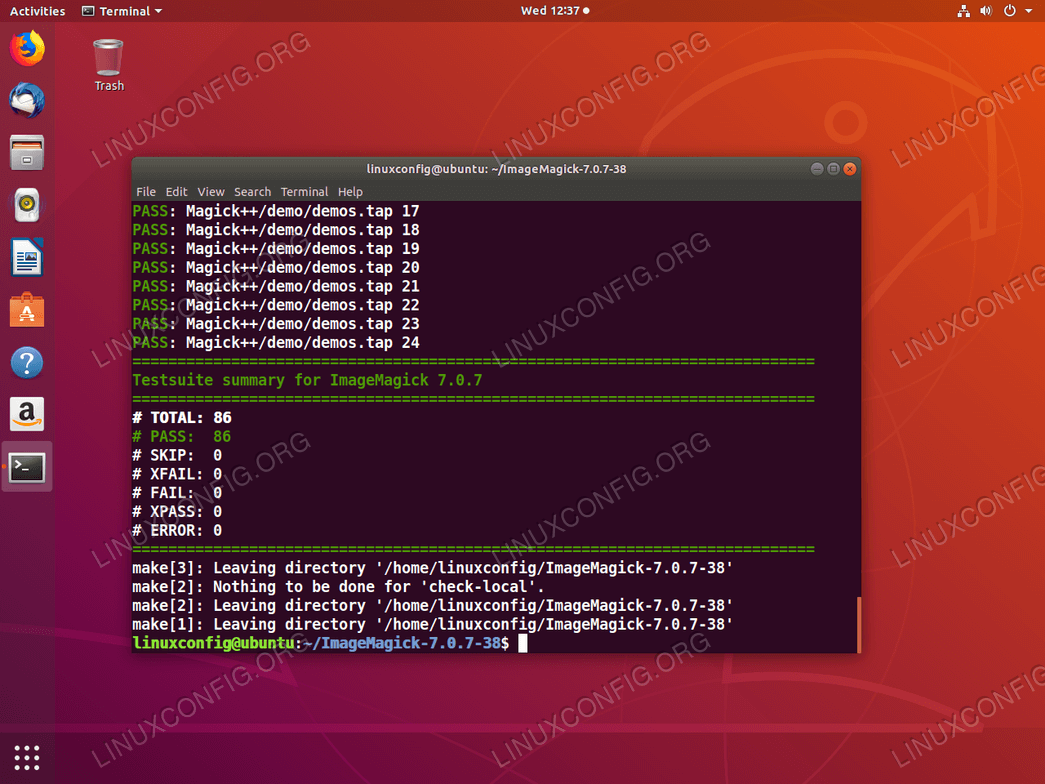

- #Install linux imagemagick how to#
- #Install linux imagemagick mac os#
- #Install linux imagemagick install#
- #Install linux imagemagick download#
These include, among others: CC Name of C compiler (e.g. You can influence choice of compiler, compilation flags, or libraries of the configure script by setting initial values for variables in the configure command line.

lSM -lICE -lX11 -lXt -lbz2 -lz -lm -lgomp -lpthread -lltdl LIBS = -lMagickCore-Q16 -llcms -ltiff -lfreetype -ljpeg -lfontconfig -lXext MAGICK_LDFLAGS = -L/usr/local/lib -lfreetype MAGICK_CFLAGS = -fopenmp -g -O2 -Wall -W -pthreadĬPPFLAGS = -I/usr/local/include/ImageMagick Ghostscript lib -with-gslib=yes no (failed tests)ĬFLAGS = -fopenmp -g -O2 -Wall -W -pthread

Ghostscript fonts -with-gs-font-dir=default Host system type: x86_64-unknown-linux-gnuīuild system type: x86_64-unknown-linux-gnu For example, here is a recent report from our system: ImageMagick is configured as follows. Pay particular attention to the last lines of the script output. Watch the configure script output to verify that it finds everything that If you are willing to accept configure's default options, and build from within the source directory, you can simply type: stdlib.h), and if any delegate libraries are available for ImageMagick to use (e.g. This includes finding a compiler, where your compiler header files are located (e.g. The configure script looks at your environment and decides what it can cobble together to get ImageMagick compiled and installed on your system. Now that you have the ImageMagick Linux/Linux source distribution unpacked, let's configure it. Unpack the distribution it with this command: tar xvzf
#Install linux imagemagick download#
Download from or a mirror and verify the distribution against its message digest. A compiler is required and fortunately almost all modern Linux systems have one.
#Install linux imagemagick mac os#
ImageMagick builds on a variety of Linux and Linux-like operating systems including Linux, Solaris, FreeBSD, Mac OS X, and others. However, if you want to customize the configuration and installation of ImageMagick under Linux or Linux systems, lets begin.
#Install linux imagemagick install#
If so, you also have the option of installing a pre-compiled binary release or if you still want to install from source without all the fuss see the simple Install From Source instructions.

This process is experimental and the keywords may be updated as the learning algorithm improves.It's possible you don't want to concern yourself with advanced installation under Linux or Linux systems. These keywords were added by machine and not by the authors.
#Install linux imagemagick how to#
If you need more details for the instructions in this chapter, then I recommend you refer to Chapter 12, which covers more details about how to get help online, where the various ImageMagick community resources are, and where to find the Web site for this book, which is where I’ll post any errata and changes to the build process as I learn about them. Now that you have ImageMagick installed, you can move onto the much more interesting aspects of ImageMagick, such as Chapter 2, which talks about changing the size of images and making thumbnails Chapter 3, which talks about how to convert images between different compression formats and Chapter 5, which shows how to apply some fantastic visual effects to your images. This chapter hasn’t been the most exciting chapter that you’ll read in the book, but it’s an important one, because it shows you how to get ImageMagick installed on your machines.


 0 kommentar(er)
0 kommentar(er)
